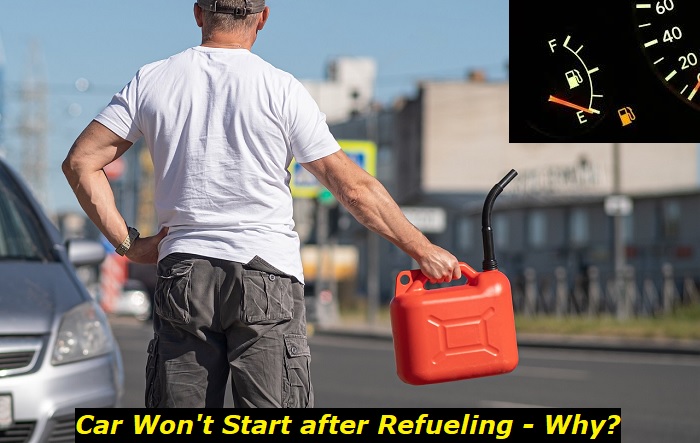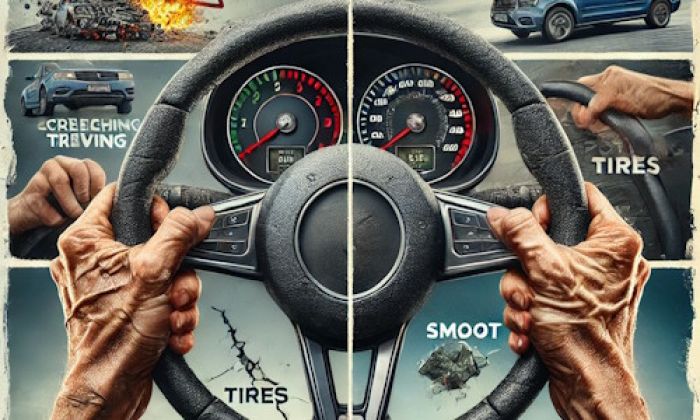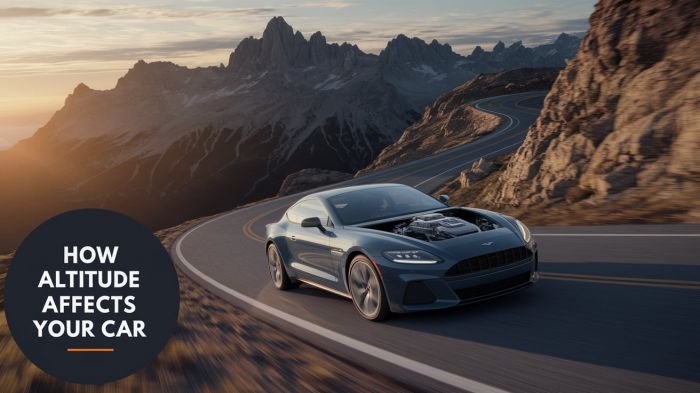Running out of fuel is one of the worst things that can happen to you on the road. Especially if you are on the highway, in the middle of nowhere, and there is no gas station within miles around. Eventually, you'll manage to get some help and will buy some fuel. But it's hard to imagine your frustration when your car or truck doesn't start even after you refuel it. What's wrong with it?
Crank-no-start problems highlights
- Level of urgency:High
- Can you drive?Obviously, no
- DIY inspection:Possible but complicated
- DIY repair:Mostly,impossible
- Price for repair:$350 - $800
- Common Reasons:No spark, no fuel, no air, battery issues, starter problems, electronics
- Ways to fix:Inspect units that may cause this problem one by one

Here's what happens when your car drinks up all the fuel
It's not a really good idea to drive your car till there is no fuel in the tank. That's why manufacturers tend to leave about a gallon of unseen fuel in the tank. It means that when the trip computer already shows 0 miles and the fuel gauge is on zero, there is still about a gallon of gas in the tank.
But even this amount is not enough for the optimal functioning of the vehicle. In most cases, you may drive up until there is no fuel at all in those cases when the fuel meter in your tank doesn't work and you have no clue how many miles you can drive.
Here are the symptoms of no fuel in the tank:
- the car gradually died on the road and refuses to start;
- everything works fine, the engine cranks and even catches the ignition sometimes, but stalls immediately;
- there is no pressure of the gas on fuel injectors - you can't usually check it on the roadside, and you are unlikely to have a manometer with you;
- the sound of the fuel pump in your gas tank changes - it becomes much louder than usual.
You should keep in mind that fuel meters are not always telling you the truth. Very often, you will see the fuel gauge showing a quarter of the tank but in reality, the fuel is over and the car won't start. It's not always easy to identify the problem because the meter may still show you some fuel in the tank available for your driving.
If you are stranded on the road and the car still thinks to act OK but doesn't start, you may be sure that the problem is in the lack of fuel or in the bad fuel supply. Anyway, you will, first of all, need some fuel to check the easiest possible repair. But what if refueling didn't help and the car still doesn't start? Let's see!
Common reasons for no-start after refueling your car
Before you get frustrated, you need to understand the reason why your car is malfunctioning. It's not always because of some bad breakdown that's hard to fix. Sometimes, the reason for the problem is easy to locate and fix right on the roadside.
Here are the common reasons and ways to deal with the problems:
1. Your fuel pump needs time to build up pressure
Your car will not start immediately. You will need to crank the engine for some time before the fuel pump builds up the needed pressure and send the new fuel to the injectors. It may take up to a minute and it doesn't mean that the car is broken and needs repair.
Just keep cranking with sessions of about 10 seconds. After the fifth or sixth session, your vehicle should start successfully. If it didn't, keep reading and see what else you can do.
2. The 12V battery may suffer
You might have misunderstood the situation and kept cranking the engine for some time when your car was out of fuel. This led to one more problem - the 12V battery may have lost its juice. So now, when you need to crank the engine for another minute, the battery may not be ready to do this.
If you feel that the cranking sound changes and you suspect that the battery is going to die, you should shorten the cranking sessions to 5 seconds. This may help you start the vehicle before the battery dies.
If the battery is dead and it doesn't crank the engine anymore, you will need some help. You may try finding a roadside service company or stop a vehicle and ask if its driver can help you to jump-start the battery.
3. The fuel cap may not be tightened
Your fuel supply system will work properly in that case only if the gas cap is tightened. Otherwise, extra air will get into the system and will disturb the pump from building up the needed pressure. Tighten the gas cap and try starting your car again.
You will be surprised to know how many drivers get caught with this simple trick. Better always to check if the gas cap is tightened properly. It's extremely important for the proper work of your vehicle.
4. Fuel pump is dead
This is not something you can solve on the roadside. The problem is that when your fuel pump works in a completely empty tank, it doesn't get proper cooling because it's cooled down by the fuel itself. And this makes it overheat and work in bad conditions. If the pump is old and worn out, it may eventually fail when it sucks up all the fuel from the tank.
Also, it may have got some particles from the bottom of the fuel tank and the small filter didn't help. These particles may easily kill the pump or at least make it work less efficiently. It means that the pump will need to be replaced.
5. Fuel filter is clogged
There are at least two fuel filters in all modern cars. And both may get clogged and disturb you from successfully starting your vehicle after refueling.
The first filter is the small cleaner that is attached to the fuel pump and is located in the tank. This filter is thought to last as long as the car but it can catch some particles when the fuel is on a very low level. When it gets clogged, it may also kill the pump very quickly.
The second fuel filter is the changeable cleaning device located under your vehicle or in the engine bay. It's integrated into the fuel line at some point. These filters need to be changed about every 30,000 miles. If this filter is clogged, it will not allow the fuel to come through it at the needed pressure and the car may refuse to start.
It's important to consider clogged fuel filters because exactly the problem with the empty tank may have triggered these problems.
6. Purge valve issues
EVAP problems can easily trigger the no-start issue in your vehicle. The problem is that the purge valve may stuck open and this will send air to the injectors instead of sending fuel. This means that you won't be able to start the car until the purge valve is replaced with a working one. This is also not a roadside procedure.
7. Bad quality of fuel
Where have you taken that fuel that you've just poured into the tank of your vehicle? If this is an unknown no-name gas station in the middle of nowhere, chances are the fuel is of not very high quality. If this is the case, the bad fuel will not ignite and will actually contaminate the entire fuel supply system in your vehicle.
While it may seem to be not a very serious problem, solving the issue with poor fuel quality that doesn't want to burn is much harder than resolving almost all other problems listed above.
What can you do if the cat doesn't start?
So, now you can't start the car, the battery is most likely dead or about to die. What should you do? First of all, you should find a shop or a dealership that will help you with the problem. Find the nearest repair shop that can take your car in for diagnosis and repairs. After that, you need to find a way to get to that shop.
Here are some possible options:
- call a tow-truck service - this is the most expensive but the safest way to get there;
- call road assistance - they will try to start your car without moving it to the shop;
- tow your vehicle - you will need to stop a truck and ask its driver to help you (but make sure your car is safe to tow);
- ask if the repair shop you've found has a fleet truck that can help you with towing.
Pay attention to the type of transmission in your vehicle. Not all types of transmissions allow towing with the drive wheels on the road. Make sure you don't cause any additional damage to your vehicle when getting it delivered to the repair shop.
About the authors
The CarAraC research team is composed of seasoned auto mechanics and automotive industry professionals, including individuals with advanced degrees and certifications in their field. Our team members boast prestigious credentials, reflecting their extensive knowledge and skills. These qualifications include: IMI: Institute of the Motor Industry, ASE-Certified Master Automobile Technicians; Coventry University, Graduate of MA in Automotive Journalism; Politecnico di Torino, Italy, MS Automotive Engineering; Ss. Cyril and Methodius University in Skopje, Mechanical University in Skopje; TOC Automotive College; DHA Suffa University, Department of Mechanical Engineering






Add comment